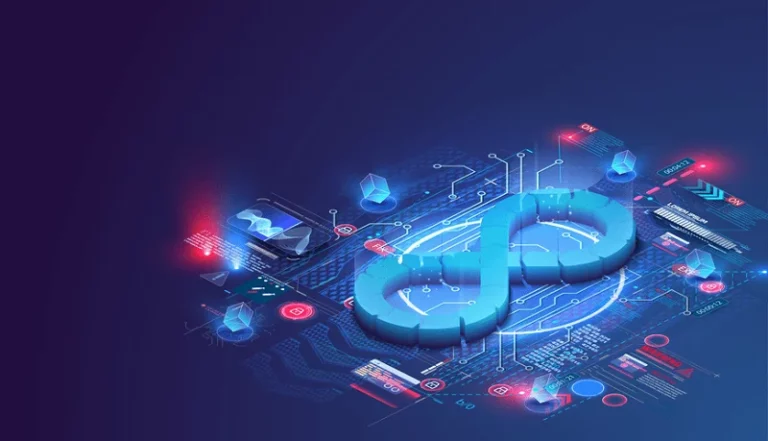Even if you don’t know much about artificial intelligence, it can help you with reports and articles. If your company uses a lot of written content, then NLU could be an excellent solution for your business. In recent years, with so many advancements in research and technology, companies and industries worldwide have opted for the support of Artificial Intelligence (AI) to speed up and grow their business. AI uses the intelligence and capabilities of humans in software and programming to boost efficiency and productivity in business. Over the past year, 50 percent of major organizations have adopted artificial intelligence, according to a McKinsey survey.
Machine Translation, also known as automated translation, is the process where a computer software performs language translation and translates text from one language to another without human involvement. Using NLU, voice assistants can recognize spoken instructions and take action based on those instructions. For example, a user might say, “Hey Siri, schedule a meeting for 2 pm with John Smith.” The voice assistant would use NLU to understand the command and then access the user’s calendar to schedule the meeting. Similarly, a user could say, “Alexa, send an email to my boss.” Alexa would use NLU to understand the request and then compose and send the email on the user’s behalf. Another challenge that NLU faces is syntax level ambiguity, where the meaning of a sentence could be dependent on the arrangement of words.
NLP vs. NLU: from Understanding a Language to Its Processing
This information helps the NLU system understand the role of each word in the sentence and how they relate to one another. Whereas in NLP, it totally depends on how the machine is able to process the targeted spoken or written data and then take proper decisions and actions on how to deal with them. In NLU, the texts and speech don’t need to be the same, as NLU can easily understand and confirm the meaning and motive behind each data point and correct them if there is an error. Natural language, also known as ordinary language, refers to any type of language developed by humans over time through constant repetitions and usages without any involvement of conscious strategies. Discover the latest trends and best practices for customer service for 2022 in the Ultimate Customer Support Academy.
- This means that with the power of NLU, data scientists can categorize text and meaningfully analyze different formats of content.
- NLU is a subdiscipline of NLP, and refers specifically to identifying the meaning of whatever speech or text is being processed.
- A confusing experience here, an ill-timed communication there, and your conversion rate is suddenly plummeting.
- NLU is therefore focused on enabling the machine to understand normal human communication – referred to as natural language – as opposed to being able to communicate via computer-speak or machine language.
- It plays an important role in customer service and virtual assistants, allowing computers to understand text in the same way humans do.
It also supports as many languages as possible, and should be able to automatically translate information for users who don’t speak English as a first language. Finally, the best NLP software should continuously improve its artificial intelligence as more data is fed into it. With the help of natural language understanding (NLU) and machine learning, computers can automatically analyze data in seconds, saving businesses countless hours and resources when analyzing troves of customer feedback. Whether you’re on your computer all day or visiting a company page seeking support via a chatbot, it’s likely you’ve interacted with a form of natural language understanding. When it comes to customer support, companies utilize NLU in artificially intelligent chatbots and assistants, so that they can triage customer tickets as well as understand customer feedback.
Text Analysis and Sentiment Analysis
Then, companies can use this information to search for these entities and identify common trends or other actionable insights. Knowing the rules and structure of the language, understanding the text without ambiguity are some of the challenges faced by NLU systems. NLG does exactly the opposite; given the data, it analyzes it and generates narratives in conversational language a human can understand. Question answering is a subfield of NLP and speech recognition that uses NLU to help computers automatically understand natural language questions. You can type text or upload whole documents and receive translations in dozens of languages using machine translation tools.
Natural Language Processing is a part of artificial intelligence that helps computer machines understand, interpret and manipulate human language. NLP is an umbrella term that encompasses any and everything related to making machines able to process natural language, whether it’s receiving the input, understanding the input, or generating a response. Human language is typically difficult for computers to grasp, as it’s filled with complex, subtle and ever-changing meanings. Natural language understanding systems let organizations create products or tools that can both understand words and interpret their meaning. It’s essential to choose an NLU platform that supports the languages of your customers. A good NLU solution must recognize linguistic entities, extract their relationships, and use semantic software to understand the content.
NLP vs. NLU: What is the use of them?
For example, the suffix -ed on a word, like called, indicates past tense, but it has the same base infinitive (to call) as the present tense verb calling. NLU is a critical component of AI that enables machines to understand and interpret human language. It involves various techniques such as tokenization, part-of-speech tagging, named entity recognition, and semantic analysis to break down text into smaller components and extract relevant information. NLU has a wide range of applications in AI, including chatbots, voice assistants, text-based interfaces, and natural language generation.

NLU helps computers comprehend the meaning of words, phrases, and the context in which they are used. It involves the use of various techniques such as machine learning, deep learning, and statistical techniques to process written or spoken language. In this article, we will delve into the world of NLU, exploring its components, processes, and applications—as well as the benefits it offers for businesses and organizations. Understanding natural language Natural language understanding (NLU) is a type of natural language processing.
Contents
Because NLU enables the virtual assistant to understand people as they talk in their own words, it means it is no longer constrained by a fixed set of responses. Text analysis solutions enable machines to automatically understand the content of customer support tickets and route them to the correct departments without employees having to open every single ticket. Not only does this save customer support teams hundreds of hours,it also helps them prioritize urgent tickets. Natural language understanding (NLU) is a subfield of natural language processing (NLP), which involves transforming human language into a machine-readable format.

Natural language processing and its subsets have numerous practical applications within today’s world, like healthcare diagnoses or online customer service. Based on some data or query, an NLG system would fill in the blank, like a game of Mad Libs. But over time, natural language generation systems have evolved with the application of hidden Markov chains, recurrent neural networks, and transformers, enabling more dynamic text generation in real time. Generally, computer-generated content lacks the fluidity, emotion and personality that makes human-generated content interesting and engaging. However, NLG can be used with NLP to produce humanlike text in a way that emulates a human writer. This is done by identifying the main topic of a document and then using NLP to determine the most appropriate way to write the document in the user’s native language.
NLP vs. NLU vs. NLG: the differences between three natural language processing concepts
Whereas natural language understanding seeks to parse through and make sense of unstructured information to turn it into usable data, NLG does quite the opposite. To that end, let’s define NLG next and understand the ways data scientists apply it to real-world use cases. NLP is the combination of methods taken from different disciplines that smart assistants like Siri and Alexa use to make sense of the questions we ask them. It combines disciplines such as artificial intelligence and computer science to make it easier for human beings to talk with computers the way we would with another person. This idea of having a facsimile of a human conversation with a machine goes back to a groundbreaking paper written by Alan Turing — a paper that formed the basis for NLP technology that we use today.
To remove such confounder, the backdoor adjustment with causal intervention is utilized to find the true causal effect, which makes the training process fundamentally different from the traditional likelihood estimation. On the other hand, in inference process, we formulate the bias as the direct causal effect and remove it by pursuing the indirect causal effect with counterfactual reasoning. Experimental results show that our proposed debiasing framework outperforms previous state-of-the-art debiasing methods while maintaining the original in-distribution performance.
What Ticket Routing Means for Your Customer Satisfaction
Both NLP and NLU aim to make sense of unstructured data, but there is a difference between the two. For instance, the word “bank” could mean a financial institution or the side of a river. The verb that precedes it, swimming, provides additional context to the reader, allowing us to conclude that we are referring to the flow of water in the ocean. The noun it describes, version, denotes multiple iterations of a report, enabling us to determine that we are referring to the most up-to-date status of a file. For example, using NLG, a computer can automatically generate a news article based on a set of data gathered about a specific event or produce a sales letter about a particular product based on a series of product attributes.
Natural language understanding means that the machine is like a human being, and has the ability to understand the language of a normal person. Because natural language has many difficulties in understanding (detailed below), NLU is still far from human performance. In this case, the person’s objective is to purchase tickets, and the ferry is the most likely form of travel as the campground is on an island.
It can be used to categorize messages, gather information, and analyze high volumes of written content. In fact, when used together, the Audio Intelligence APIs discussed throughout this post help companies find valuable structure and patterns in the previously unstructured data. This structure provides important visibility into rep activity and customer and prospect engagement, nlu machine learning helping keep teams in sync and generating data-backed goals and actions. With NLP integrated into an IVR, it becomes a voice bot solution as opposed to a strict, scripted IVR solution. Voice bots allow direct, contextual interaction with the computer software via NLP technology, allowing the Voice bot to understand and respond with a relevant answer to a non-scripted question.
